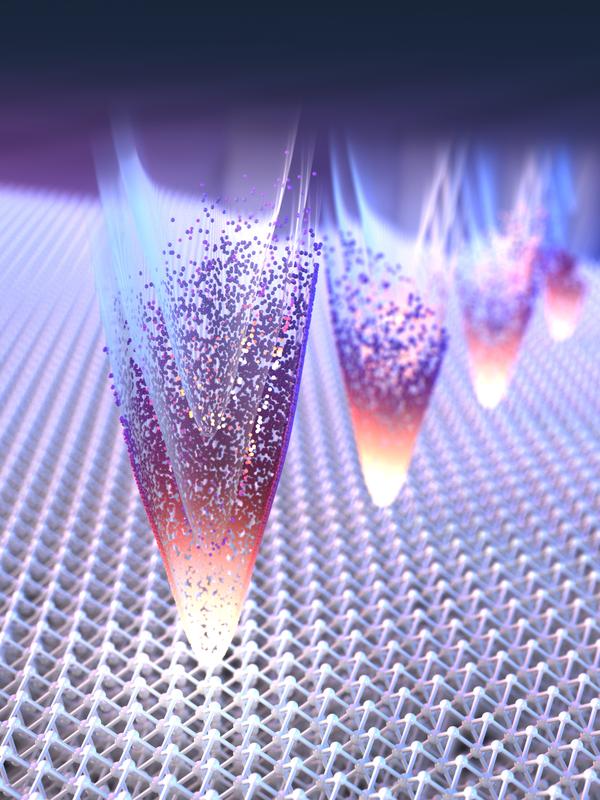| Apr 13, 2023 |
Lightly dressed
(Nanowerk News) Since ancient times, humans have attempted to modify materials by combining different substances. Imagine being able to change a material's properties just by shining light on it. A group of European physicists has taken a significant step towards this goal by combining electrons in a solid with light. This team, which includes researchers from several universities and institutes, has observed for the first time the formation of exotic states called Floquet bands in a crystal.
|
|
The discovery, published in the journal Nature ("Build-up and dephasing of Floquet-Bloch bands on subcycle timescales"), could revolutionize our understanding of material properties.
|
|
"The discovery of new material properties usually depends on our ability to control the chemical composition of the material," said Marburg physicist Prof. Dr. Ulrich Höfer, a lead author of the paper who also holds an adjunct professorship at University of Regensburg. "Purely optical manipulation of material properties could take physics into a new era by enabling new functionalities on demand."
|
 |
| When electrons in a topological insulator surface are accelerated in their energy-momentum band (lowest cone) by strong lightwaves, Floquet-Bloch replica “dress” the equilibrium band. Subcycle band-structure videography reveals the formation dynamics. (Image: Brad Baxley)
|
|
The team used the method of angle-resolved photoemission spectroscopy to study the surface electrons of the topological insulator bismuth telluride. In this material, the electrons can move ballistically for long times without scattering. By employing intense light pulses, the researchers could drive these electrons periodically through the crystal. This led to an exotic quantum effect, causing the electrons to have not just one fixed energy state, but many energy states evenly spaced apart by the driving photon energy. These so-called Floquet bands are hybrids between electrons and light.
|
|
"However, the dynamic properties of such states have remained elusive until now," explains Regensburg physicist Prof. Dr. Rupert Huber, another lead author.
|
|
The team's measurements went far beyond the limit of what could be achieved to date with this technique. They managed to take actual videos of the moving electrons with a time resolution better than a single oscillation cycle of the electromagnetic carrier wave of light. As a result, they made an unforeseen discovery: "Surprisingly, Floquet bands form already after a single optical cycle," says Dr. Suguru Ito, the first author of the publication. "Our experiment opens up the possibility of visualizing a large number of transient quantum states," adds Huber. "This paves the way to tailored quantum functionalities and ultrafast electronics."
|
|
The experimental findings are supported by theoretical modeling contributed by Dr. Michael Schüler of the Paul Scherrer Institute in Villigen, Switzerland, and Dr. Michael Sentef of the Max Planck Institute for Structure and Dynamics of Matter in Hamburg, Germany. The German Research Foundation funded participating scientists through Collaborative Research Centers in Marburg and Regensburg and through the Emmy Noether program. Several international funding organizations provided further financial support.
|
|
Having established the fundamental time limit for light-induced material engineering, the team's breakthrough discovery could lead to a new era of materials science, enabling the creation of new functionalities on demand.
|

